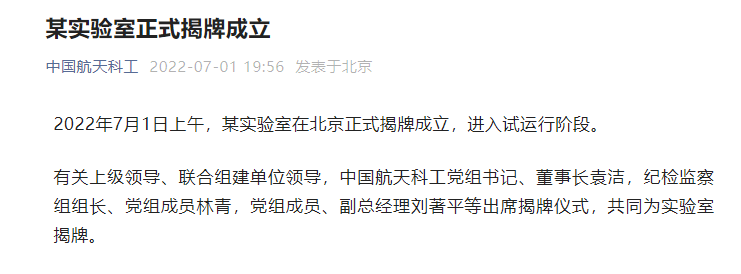ARM is about to lose MCU?
Author:Drive China Time:2022.08.08
Recently, news about the RISC-V MCU has spread out. Risa said that Risc-V MCU was developing. Epste Microelectronics reached a cooperation with Pingtou.
At the Embedded World Exhibition, Calista Redmond, the CEO of SC-V International, also said: "The shipment of the RISC-V chip has exceeded 10 billion."

RISC-V used Thunder Perak to impact the MCU under the rule of ARM architecture.
Cheng Ye ARM, defeated also ARM
The history of the architecture of the MCU kernel is not long, about thirty years. From Intel launched the world's first MCU product in 1971, to the MCU entered the development fast track after the 1990s, the kernel architecture of the MCU changed. The first -generation architecture of the MCU was an early Intel -led architecture; as companies such as Risa began to develop MCUs, the architecture of this type of MCU giant was considered the second -generation MCU architecture. Now that the computing requirements are getting higher and higher, the specialized kernel manufacturers have begun to appear, and the division of labor has been further refined. ARM has become the mainstream MCU market architecture, which is the third -generation architecture.
There are two dimensions that determine the key elements of a MCU performance and application scenarios -the main frequency and kernel architecture. The kernel architecture is a key factor that affects the performance of the processor. The advanced architecture has more powerful instruction sets and better computing units.
In the past few years of domestic MCUs, because ARM can be used for various convenient tools such as development environment to software, and its architecture can be compatible with the mainstream ecology, fully reuses the existing application design to reduce the design-in-in The threshold, these advantages have attracted domestic MCU manufacturers. Due to the advantages of ARM, 90%of domestic MCU manufacturers use ARM's Cortex-M series kernel. Among them, Zhaoyi's 32-bit MCU products mainly use five MCU cores: M23, M3, M4, M33, and RISC-V; Huada Semiconductor mainly uses two MCU kernels: M0+and M4; M4 two MCU kernels.
However, the increase in the number of domestic MCU manufacturers using ARM kernel has also brought many problems. The first problem is that the homogeneity of domestic MCU chips is becoming more and more serious. Many MCU manufacturers use the same kernel, so the gap between the MCU on the market is more on I/O, and the severe homogeneity leads to price competition. But if you can only compete in price, it is not good for the entire industry and most companies.
Another problem is that after decades of development, the more mature ARM architecture has also become extremely complicated. This can be seen from the complexity of its architectural documents and instructions. In addition, the ARM instructions are closed, authorized and patent costs are high, and it is not convenient to customize.
In addition, the ARM architecture itself is also facing the technical test. The performance of different ARM kernels is large. With the increase of the ARM kernel operating frequency, the energy consumption of the MCU chip has increased rapidly. Therefore, how to reduce energy consumption with high -frequency ARM kernels is a great problem for MCU manufacturers.
It can be described as ARM defeated and ARM. For domestic high -end universal MCUs, the existence of ARM can undoubtedly speed up the pace of catching up with international giants. For example, Zhaoyi Innovation has the largest ARM architecture MCU product line in China. More than 200 million. But for the low -end MCU, it is not possible to compete and start to take a price war, which has also caused confusion in the competition order of the MCU market. Therefore, many powerful and visionary domestic MCU manufacturers have begun to turn to differentiated market planning and market competition.
RISC-V MCU developed crazy development
In chip-level hardware, ARM and RISC-V opened the front battlefield in the MCU field.
As we all know, open source is a major advantage of RISC-V, but in addition, flexibility is also one of the reasons for its many manufacturers.
Because there is no compatible burden of X86 and ARM instruction sets, the RISC-V instruction set has great benefits to improving power consumption and performance. After a team with a strong skill, after designing several chips, they can design a processor with better power consumption and performance.
In addition, the use of the RISC-V instruction set design MCU can allow chip manufacturers to quickly complete the low-threshold and low-cost chip design, and customize the design of specific application scenarios. The modular design is greatly convenient for customers to customize freely according to their needs (from the beginning to avoid problems in the decades of development of ARM).
Former Intel Vice President Fang Zhixi once said: "The flexibility of RISC-V can also play a role in AI. The information security in AI is more important.
MCUs with RISC-V as the architecture broke out.
As a global MCU leader, Risc-V MCU products were launched this year, which are mainly used in voice applications. His Executive Vice President Sailesh Chittipeddi recently said in an interview that this is the future strategy of Risa, and Risa is developing the RISC-V core.
Sailesh Chittipeddi bluntly said: "Because we must choose RISC-V because of customer requirements. On the one hand, some customers want to maintain the independence of technology and" black box "; on the other hand, customers in many regions in the world are unwilling to pay ARM's patent Fees. In addition, there are many customers in geopolitical sensitive areas that are also worried about the problem of unable to access IP. RISC-V is the only open ecology. This is why the MCU of the RISC-V architecture becomes the next layout of Risa. "MCU MCU The leader of the leader also shows the fierce Risc-V MCU; the domestic MCU manufacturer is not willing to.
Zhaoyi Innovation released a 32-bit universal MCU product based on the RISC-V core, which provides a complete tool chain from chip to program code library, development kit, and design scheme.
The ANT32RV56XX of the China Micro Semiconductor is also a 32-bit MCU that integrates the RISC-V kernel.
Ali Ping Tou and MCU manufacturer Epster further reached in-depth cooperation. It plans to launch six major RISC-V chip series products in the next year, including voice AI MCU, car MCU, etc.
Qinheng Micro-developed embedded RISC-V architecture MCU Green Pupa V4 has the main frequency of 144MHz system and the first HPE and VTF interrupt technology, which greatly improves the interrupt response.
At present, the RISC-V kelp developers include SIFIVE, Sai, Core, Pingtou Brother, Jingxin; RISC-V's MCU developers include Microchip, NXP, Pingtou Brother, Zhaoyi Innovation, Qin Hengwei's Bo Liu Smart, Ta Ling Micro Electronics, Micro Semi -Director, Hangshun and so on.
RISC-V omnisposus siege
In terms of market demand, ARM may no longer be the darling of future MCUs. Judging from the proportion of MCU applications, automobile MCU accounts for 40%of the global MCU market. In addition to the automotive market, the second largest market for MCU is industrial applications (30%). The remaining 30%is mainly used in consumer electronics. , IoT and other fields.
In the automotive field of MCU's maximum proportion, the RISC-V MCU began to "get on the car".
At the end of 2020, Ruisa launched the car MCU RH850/U2B of the car that integrates the RISC-V processor, including the mixed ICE and XEV motor inverters, high-end regional control, Internet customs and domain control;
In 2021, Ling Siwei also launched the RISC-V architecture-based vehicle-level wireless MCU product series U is mainly used in body control, instant communication, car entertainment;
It is not difficult to see that the RISC-V MCU has appeared in car entertainment, car communication and other scenarios. Director SmartDV North America has said that RISC-V will definitely enter the car world. Associate Professor He Hu of Tsinghua University Integrated Circuit School has also analyzed that using the RISC-V's software ecology is an important part of the success of the MCU of the vehicle regulations.
In addition, Risc-V also has great advantages in the MCU market in the field of consumer electronics and the Internet of Things.
IoT Analytics predicts that by 2022, the Internet of Things market is expected to increase by 18%to 14.4 billion active connections. It is estimated that by 2025, with the relief and further acceleration of supply restrictions, there will be about 27 billion IoT devices.
The outbreak of the Internet of Things brings the fragmentation of the required equipment. Bao Yungang, Secretary-General of the China Open instruction Ecology (RISC-V) Alliance, analyzed in the article "Show the Three Prosperity, Risc-V Ecological Future", and analyzes that due to the needs of the Internet of Things AIOT and the extreme market fragmentation, existing existing The processor design method will also be more diversified. AIOT fragmented demand brings processor's ecological change opportunities.
The MCU is the core part of the IoT terminal, and its value accounts for 35%-45%of the IoT terminal module. In the field of Internet of Things, flexibility will be the biggest advantage of RISC-V MCU better than ARM MCU.
According to industry analysts, the current development of China's local MCU has five major driving force, namely the Internet of Things, RISC-V, domestic alternative, chip shortage, and edge AI. Therefore, the MCU of the domestic RISC-V architecture has become the object of many manufacturers.
The MCU in embedded fields such as industrial control, especially in applications with customized needs, RISC-V MCU has already become a new growth point. Under the demand for RISC-V MCUs in these areas, the growth rate of RISC-V MCU in the future may surpass the MCU of the ARM architecture.
There are still three major problems to build RISC-V MCU
The first aspect is the unified problem brought by RISC-V fragment.
Due to the open source characteristics of RISC-V, different manufacturers conduct commercial and self-developed RISC-V cores. Driven by different commercial interests, the RISC-V MCU is difficult to form a unified ecology.
The second aspect is a problem for the RISC-V software development tool chain.
Compared with ARM, Riac-V has a shorter development time, so ecological elements such as compilers and development tools are still developing.The mainstream RISC-V MCU development tools include Iar Systems, LauterBach, Segger, UITRASOC, MOUNRIVER Studio; many domestic manufacturers are developing RISC-V MCU development tools.The third aspect is the problem of RISC-V as the new forces and uneven resources.
At present, most MCU manufacturers use the ARM architecture. If you want to add the MCU of the RISC-V architecture, you must allocate resources at the same time as the production capacity is short and cooperate with customers.V is difficult to get support.
Innovation and ecology are the key to domestic MCU companies to the world's first-class, and RISC-V provides appropriate soil as a new ecology.Although the development of RISC-V MCU is still difficult, driven by future demand, RISC-V MCU potential as new types of things is huge.
- END -
Follow the whole network!A laboratory officially unveiled

On July 1, China Aerospace Science and Technology issued an announcement: a labora...
Won the first Zhejiang!The first batch of "Science and Technology Innovation China" innovation bases on the 4 bases of Wenzhou

Recently, the website of the China Science and Technology Association (hereinafter...